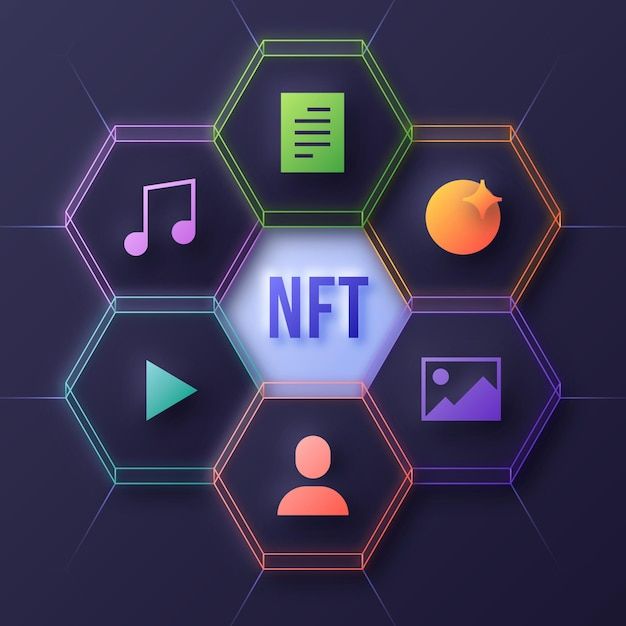Menu

NFTs continue to shape the future of digital art, and in 2025, creating your own NFT collection using vector graphics is one of the smartest moves for aspiring crypto artists. Vectors are lightweight, infinitely scalable, and ideal for generative NFT projects or animated layers. Whether you’re using Adobe Illustrator, Figma, or platforms like Seekvector, working with vectors allows you to build clean, flexible designs ready for the blockchain.
As more collectors demand unique and responsive artwork, designers are turning to structured vector files for layered control and high visual impact. From trait generation to minting, this article will walk you through every step of the journey.
Vectors stand out in NFT creation because they allow for high-resolution clarity across devices, which is crucial for collectors using HD displays, VR, or augmented reality. Compared to raster images like JPEG or PNG, vectors don't pixelate when scaled, making them a perfect fit for NFT marketplaces that prioritize quality and longevity.
Platforms like OpenSea, the largest NFT marketplace, support scalable file formats like SVG, making it easier for artists to retain detail. Meanwhile, design hubs such as Seekvector offer prebuilt, editable vector layers that simplify the design process for beginners and advanced users alike.
Designing your NFT collection starts with choosing the right tools. Many creators rely on industry staples like Adobe Illustrator or Figma, but specialized platforms are emerging to support faster workflows.
If you’re new to design, Seekvector’s NFT Creator Kits provide layered assets you can edit and export instantly. These kits are ideal for building collections with interchangeable traits — such as eyes, backgrounds, or accessories — essential for generative drops.
Once your collection is ready, platforms like Rarible, Foundation, or Zora allow you to mint and list your art without coding. Tools like Manifold Studio even let you create custom smart contracts for enhanced control over royalties and ownership.
NFT design has matured beyond simple pixel art. In 2025, creators are integrating generative logic, real-time interactivity, and AI-generated trait variations to stand out. Using vector files ensures that each layer — whether animated or static — remains lightweight and responsive.
Collections like Bored Ape Yacht Club popularized layered traits, and this approach has evolved into generative projects powered by JSON metadata and SVG layers. Designers now use Figma or Illustrator to prepare organized trait folders before feeding them into NFT generators like HashLips Art Engine.
On the content side, Seekvector offers a curated Generative NFT Design System, letting you mix and match prebuilt components for thousands of possible variations.
🔗 External Link: Learn about how traits and rarity work from Crypto.com’s NFT layering guide.
Once your designs are ready, it’s time to mint — the process of registering your NFT on the blockchain. Tools like OpenSea, Mintable, and Zora offer gasless or low-cost minting options, allowing you to test your launch with minimal risk.
Most marketplaces accept SVGs or optimized PNG exports. When using layered vector files, it's important to:
Organize folders by traits (e.g., backgrounds, accessories)
Assign rarity values to each layer
Export components in high resolution
Include descriptive metadata for buyers
To avoid mistakes, use Seekvector’s NFT Launch Guide, which outlines every step from file prep to smart contract selection.
Success in NFTs isn’t just about the art — it’s about community and storytelling. In 2025, the most successful drops are supported by transparent roadmaps, strong social media presence, and clear project values.
Promote your work by:
Posting progress on Twitter/X and Lens Protocol
Joining niche Discord groups focused on vector art or generative NFTs
Listing on NFTCalendar.io or Minty
Creating SEO-optimized landing pages using Seekvector’s NFT Landing Templates
💡 Pro Tip: Share the narrative behind your collection — collectors want to invest in stories, not just images.
Conclusion
Designing your first NFT collection with vectors in 2025 is not only achievable — it’s strategically smart. Vectors give you the flexibility to scale, animate, and generate dynamic art that stands the test of time. With platforms like Seekvector offering tools, templates, and training, there’s never been a better time to turn your creativity into digital collectibles.
🛠 Ready to launch your NFT journey?
Browse the full NFT creator kits at Seekvector and mint your first collection with confidence and style.